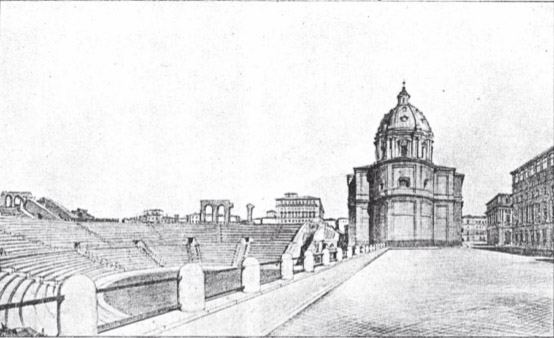The Theater in Antiquity - I
The Theater in Antiquity - II
The Theater in the Middle Ages
The Theater in the Early Modern Era
The Theater in the Modern Era
The Theater in the Modern Era
By
Kristin Triff

Proposed view of Pompey’s Theater looking
north from Via de’ Giubbonari (A. Canevari, 1937)
Palazzo Orsini-Pio was acquired by the banker Pietro Righetti
in 1851 and partially restored by Lugi Gabet in 1860. In 1864,
excavations n the northern courtyard near Piazza Biscione yielded a
massive bronze statue of Hercules (the so-called “Righetti
Hercules”) now in the Vatican museums. The building was bought
by the Istituto Tata Giovanni, its current owner, in 1887.
Documentation of the Theater from this period indicates that by
1919, new construction had filled much of the large interior
courtyard. During the 1930s, several large-scale excavation
and urban clearing projects were proposed for the Theater and its
environs, which would have entailed the complete destruction of all
post-antique construction at this site. Currently, excavations
are underway on the building’s ambulacrum in the area of
the foundation of the Temple of Venus Victrix.
